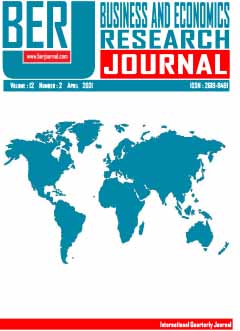Türkiye’de Para Politikasının Risk Alma Kanalı: T-FAVAR Yönteminden Yeni Asimetrik Bulgular
Risk-Taking Channel of Monetary Policy in Turkey: New Asymmetric Evidences from Threshold FAVAR
Author(s): Ugur Akkoc, Onder OzgurSubject(s): Economy, Financial Markets
Published by: Adem Anbar
Keywords: Monetary Policy; Risk-Taking Channel; T-FAVAR; Impulse-Response Functions;
Summary/Abstract: Risk taking channel of monetary policy claims that interest rate reductions have an impact on the economy via risk taking behaviour of banks. This study investigates the effectiveness of the risk-taking channel in Turkey using a Threshold FAVAR (T-FAVAR) model. The main aim of the study is to examine whether there is a change in the risk perception of banks in the low interest regime and thereby low policy rates lead to financial instability. We aim to contribute to the relevant literature by analyzing the risk-taking channel in two different regimes, determined by high and low interest rates. In this context, this study uses quarterly data for 19 Turkish commercial banks for the time period between 2003: Q1 and 2019: Q2. We conclude that the risk-taking channel is fairly strong in Turkish economy after 2003. Interest rate reductions and exchange rate shocks cause financial instability, and these effects are stronger in the high interest rate regime.
Journal: Business and Economics Research Journal
- Issue Year: 12/2021
- Issue No: 2
- Page Range: 287-305
- Page Count: 19
- Language: Turkish

